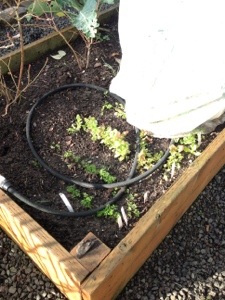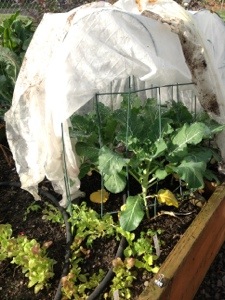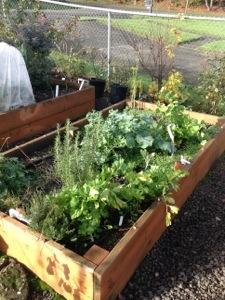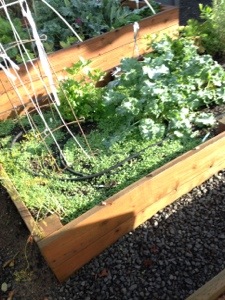Fall and winter gardening has been a real success for me. NikiJabbour recently wrote a book about this topic and I was inspired to see how it would work in my garden. I don’t think we’ve had a killing frost yet, just lots of rain, the ground is saturated, even in these raised beds. Local Master Gardeners said to have the winter veggies 90% grown by November 1st when our daylight is down to 10 hours per day and decreasing. The winter part of gardening is harvesting.

Baby lettuce does not mind the cooler temps in November. I have cut some already and I hope to have a very early crop in February.

I want to point out my small protected area of broccoli. I did not have enough plants or Remay to cover a large hoop house so I found some used, wire fencing that you stick in the ground, and then used bulldog clips to attach so it would not blow away. The part that touches the soil is being held down with rocks. Nothing fancy, but it works.


These last photos show my bed #2 with herbs at one end and crimson clover/cover crop around the last of the kale. Cover crop is very important in my climate where winter delivers rain by the inch or foot. The cover crop/green manure grows slowly and acts to buffer the soil from the rain and the roots keep the soil from getting compacted, as it would with nothing growing. Four weeks before I want to use this bed next spring to grow more veggies, I will use the string trimmer to cut down the tops, then turn them into the soil while I cut the roots.














